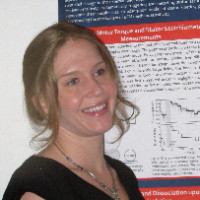Stator dynamics of the bacterial flagellar motor
 Ashley Nord
Ashley Nord
 Rubén Pérez-Carrasco
Rubén Pérez-Carrasco
- Date
- February 24 (Thu) 17:00 - 18:00, 2022 (JST)
- Speakers
-
- Ashley Nord (Researcher, Centre de Biologie Structurale, CNRS, France)
- Rubén Pérez-Carrasco (Lecturer in Theoretical Systems Biology, Faculty of Natural Sciences, Department of Life Sciences, Imperial College London, UK)
- Venue
- via Zoom
- Language
- English
The bacterial flagellar motor is the membrane-embedded rotary molecular motor which turns the flagellum that provides thrust to many bacteria for swimming, swarming, and chemotaxis. This large multimeric complex, composed of a few dozen constituent proteins, is a hallmark of dynamic subunit exchange. The stator units are inner-membrane ion channels which dynamically bind to the cell wall and convert electrochemical energy into torque which is applied to the rotor. The dynamic exchange of stator units is a function of the viscous load on the flagellum, allowing the bacterium to adapt to its local environment, though the molecular mechanisms of this mechanosensitivity remain unknown. Previously, we have shown that stator units behave as a catch bond, a counterintuitive bond which becomes stronger under applied tension. Here, by actively perturbing the steady-state stator stoichiometry of individual motors, we reveal a stoichiometry-dependent asymmetry in stator remodeling kinetics. We interrogate the potential effect of next-neighbor interactions and local stator unit depletion and find that neither can explain the observed asymmetry. We then simulate and fit two mechanistically diverse models which recapitulate the asymmetry, finding assembly dynamics to be particularly well described by a two-state catch-bond mechanism.

